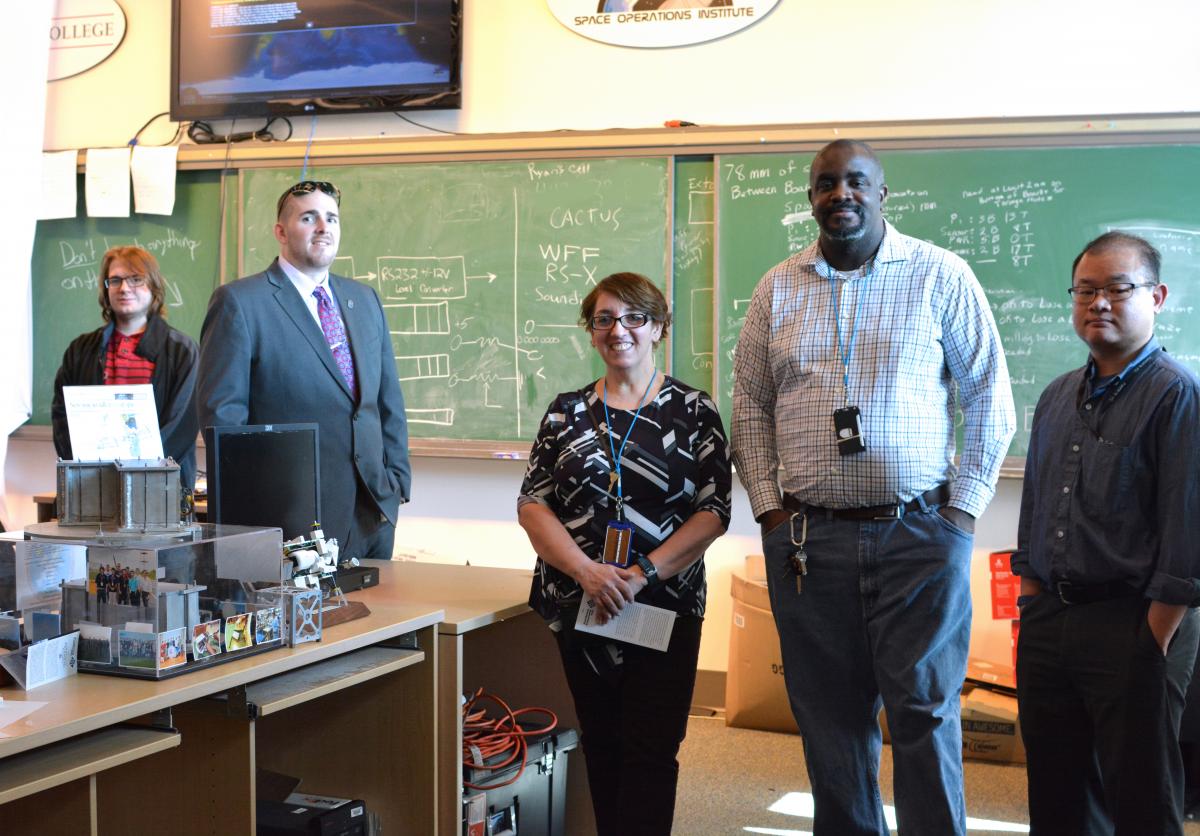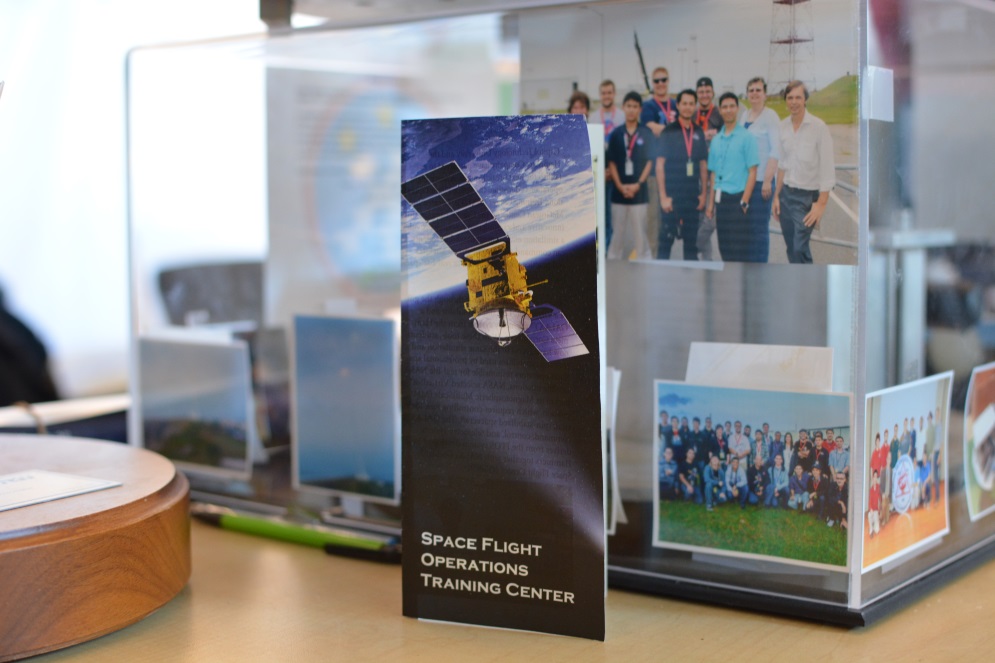Carr Astronautics Tours Capitol, Highlights Collaborative Learning
December 31, 1969At Capitol Technology University, students don’t only gain expertise in their fields.
They also learn to work with students in other disciplines, bringing different skill sets together in the service of a common goal.
 “That’s a major focus for us, because it mirrors the environment our students will encounter in the real world,” explains Sarah Alspaw, director of career development and student success. “We provide our students with collaborative, interdisciplinary experiences though resources such as our Fusion Lab, through hybrid courses, and through student projects such as the Cactus-1 satellite mission.”
“That’s a major focus for us, because it mirrors the environment our students will encounter in the real world,” explains Sarah Alspaw, director of career development and student success. “We provide our students with collaborative, interdisciplinary experiences though resources such as our Fusion Lab, through hybrid courses, and through student projects such as the Cactus-1 satellite mission.”
On Friday (January 19), visitors from Carr Astronautics, a science and tech firm based in the DC metro area, were on the Capitol campus for a first-hand look at the university’s resources and programs, including the Fusion Lab.
“I’m impressed by your lab here and the way it brings different disciplines together for hands-on projects,” said Norman Lo, software engineer at Carr. “I believe that is very useful for students.”
 “It’s very interesting to see the integration of the different disciplines -- how science, hardware, and software come together,” said IT manager Solomon Jackson.
“It’s very interesting to see the integration of the different disciplines -- how science, hardware, and software come together,” said IT manager Solomon Jackson.
As part of the tour, Cactus-1 project manager Ryan Schrenk and lead engineer Pierce Smith briefed the visitors from Carr on the student-led mission, which was chosen for launch by NASA under the auspices of the Cubesat Launch Initiative (CSLI). Cactus-1 combines two experiments – one aimed at capturing space debris using an aerogel substrate, and the other focused on satellite command and control.
“The discussion we had about the aerogel payload was interesting,” said Houria Madani, senior systems engineer at Carr. “This project could be very useful.”
Carr Astronautics, established in 1991 by James Carr, has made major contributions to US and international weather and satellite programs and is a key part of the the GOES geostationary environmental satellite mission, launched in 2016.
With its long history of practical, hands-on programs in engineering and technology, Capitol is educating a new generation of professionals to meet the space challenges of today and tomorrow. Graduates of the university’s astronautical engineering have gone onto positions with the James Webb Telescope mission and with top contractors such as Honeywell and General Dynamics. For more information about programs at Capitol, e-mail admissions@captechu.edu.


